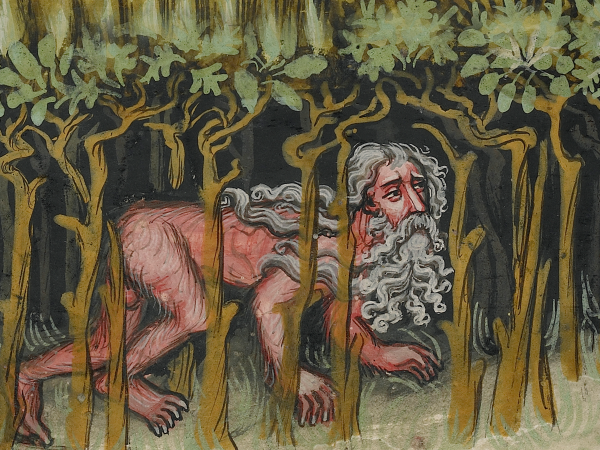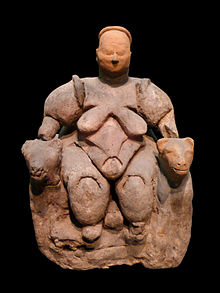Before heading full tilt into the neo-pagan mirages of the Amazon Synod, a brief personal word is due. It will only take a second:
“There is love and there is life. Yet we have but one heart.” That was the way Edgar Degas explained his failure to marry. If I were to borrow a variant of it to explain why this weblog has been silent recently, it would go something like this: “There is the studio and there is the writing desk. I have heart for each—but only one at a time.” Time is already splintered just to keep life in order. Dividing time yet again means dividing attention even more. So instead of taking a vacation, I vacated the laptop.
Then something came along to jar the frequencies and ignite transmission. That catalyst was the upcoming Amazon Synod and its working document, “Amazonia: New Paths for the Church and for an Integral Ecology.” You can read the preparatory document, in English here. Printed out at 35 pages, it is a tutorial in eco-spirituality that uses aboriginal peoples as mascots. There is an English language precís on Vatican News but lofty boilerplate obscures the nature of the thing. It must be read in its entirety.
It is an alarming document and an ugly one. I fear for my Church. And fear, like anger, is a strong motivator.

More Than a Rainforest Dispensation
Much Catholic attention so far has been on the synod’s expected tilt toward ordaining married men, those viri probati considered necessary pinch hitters for a shortfall in priests. There is concern among thoughtful Catholics that a rain forest dispensation is a camouflaged stalking horse for a wider relaxation of the discipline of celibacy (and of procedures leading to ordination?). Also, possibly, a step toward ordination of women. But these are things more ably discussed by others. What engages me here is the medicine song the synodal fathers warble to themselves. It is the tune they will officially hum to civilization and all its malcontents come October.

At stake is the nature of the Church. In jeopardy is its bedrock grounding in a biblical understanding of the abyss between the creator of all things visible and invisible and a New Age-ish, Teilhardian-tinged worship of creation as God’s own body.
What follows are scattered notes on this grotesquerie coming to us under cover of environmental concern and social justice for indigenous peoples. Liberation theology, once condemned by the Vatican, now has a seat of honor at high table. And it is wearing Green.
Listen to Their Stories; Share Their Spirituality
Incandescent with Romantic primitivism, the Instrumentum advances an extravagant sentimentality that is impervious to it own anthropological distortions:
The original Amazonian peoples have much to teach us. For thousands of years they have taken care of their land, water and forest, and have managed to preserve them to this day so that humanity can benefit of the free gifts of God’s creation. New paths of evangelization must be built in dialogue with ancestral wisdom in which the seeds of the Word are manifested.
Ancestral wisdom. Buried in that phrase are nuggets of such Stone Age sagacity as the pragmatic discarding of aged and infirm members—useless eaters who cannot hunt or keep up with the migrations of nomadic or semi-nomadic tribes. Aboriginal animism, a factor in ancestral insight, corrects the constricted biblical view of a God Who exists separate from His creation. With its celebration of “intercultural spiritualities,” the synod seeks to safeguard—to use a mot from Leonardo Boff—”the element of truth in polytheism.”

Lambs in Eden
Amazonia has a lyrical, feminine ring to it, much like Gaia. The name bypasses any suggestion of suffocating realities in a steamy jungle: scorpion stings, lice, hookworm, infections, pragmatic infanticide, and wars over the means of production—which, in Stone Age terms, means possession of women. Amazonia conjures up a graceful quasi-mystical entity that has less to do with geography, ethnography, or tropical privations than neo-animist rhapsodies. The synod croons a post-modern serenade to “environmental and cultural biodiversity.”
Its manifesto distances itself from what it views as the Church’s long-standing error: adherence to Judeo-Christian rejection of ancient man’s tendency to divinize nature. Once again—but this time in Christian terminology—nature is swollen into an object of adoration. Nature knows best. The Amazon Basin is declared a locus theologicus, a site of revelation, a hallowed biome in which the planet speaks. Listen carefully to the “cries of the Pan-Amazonia.” It is the voice of Mother Earth.
The essential thrust of the Instrumentum laboris is grotesque—morally ugly in its denial of humanity to indigenous peoples. They are less living human beings than useful abstractions by which to measure the sins of modern progress. While an obligatory glut of pious phrases intone the “dignity and nobility” of all peoples, these lambs in Eden are not like you and me. They are endowed with faculties and powers—”diverse ancestral world views”—that lend them a cosmic dimension [references to the cosmos pepper the document] unearned by suffering peoples elsewhere.
The Church is called to accompany and share the pain of the Amazonian people, and to collaborate in healing their wounds. . . . today the cry of the Amazonia to the Creator is similar to the cry of God’s People in Egypt. It is a cry of slavery and abandonment, which clamors for freedom and God’s care.
The lament continues:
At the same time, the blood of so many men and women that has been shed – bathing the Amazonian lands for the good of its inhabitants and of the territory – is joined to the Blood of Christ, which was poured out for all and for all creation.
[And for all creation. Linger awhile with the import of that. In Luke 12:24 we hear Jesus assert man’s greater worth than that of other living things: “Consider the ravens . . . and how much more are you worth than the fowls.” Jesus’ hierarchical thinking demands correction. That was old school. Now we learn that the Blood of Christ flowed down a timber for the tapir as well, and for the ant, the manioc plant, the pebbles in the stream, everything you can name. The very stuff of the cosmos—from the gases of Saturn to the chemical composition of stars— has a claim on that bloody rood.]
Theology or Eco-Porn?
The utility of Amazon natives as a weapon against the developed world makes them more interesting to the Bergoglian mind than, e.g., the poor of East Timor, Nigerian Christians persecuted by Muslim Fulani, Christian prisoners of conscience on death row in Pakistan, or forsaken children of imprisoned Uyghurs left to freeze on the streets of Xinjiang. What of the hundreds of thousands fleeing inter-tribal murder and havoc in the Congo? What of their wounds? Was the blood of Christ not poured out for them, or for the pygmies of Burundi ? Did it not spill for the people of Venezuela, hapless beneficiaries of liberation theology?
Vatican grandstanding in the Amazon is, at base, political. A cascade of religious references covers ideological antagonism toward industrial economies which the synod, following Francis’ lead, derides as “institutional violence.” Indigenous peoples of the Amazon basin serve as ammunition in this pontificate’s assault on the West, its standard of living, and its means of development. Our high priests of ecology have seized on the Amazon as the nerve center for influencing “the life of the universe and of all creation.” They cloak their own ambitions as global game-changers with sacral patter—unctuous invocations of the Triune God, the “cosmic love” of the Eucharist, and the like.
St. Augustine had a term for it: libido dominandi, the lust to dominate. With its crude resentments disguised in the language of salvation history and traditional piety, the Instrumentum heralds Vatican descent into eco-porn.

NOTE: Dances With Wolves was a 1990 blockbuster. Kevin Costner played a white soldier who joins the Lakota Sioux, entranced by their simple life style, finer sensibilities, etc., etc.



